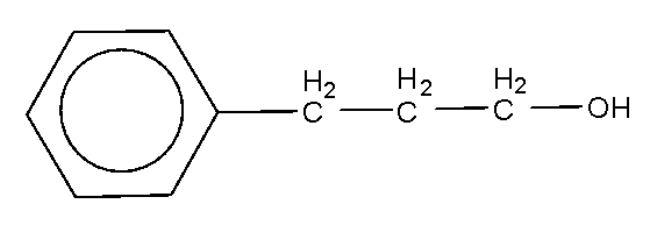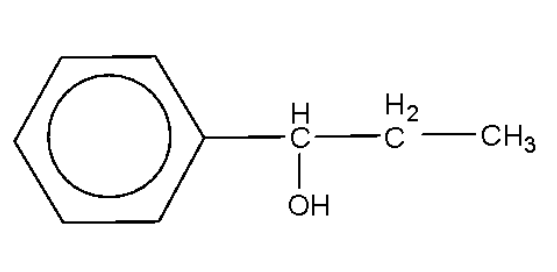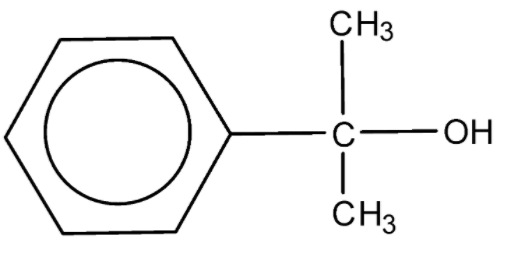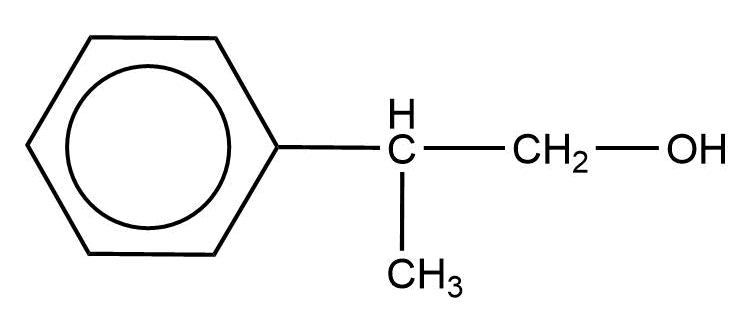
An alcohol of formula
A.

B.

C.

D.





Answer
471.6k+ views
Hint: Sodium Dichromate oxidises different organic compounds, under different acidic conditions as it is a strong oxidising agent. Alcohol can oxidise to carbonyl compounds or carboxylic acid.
Complete Step by step solution:
Alcohols are oxidized by oxidising agents like sodium dichromate and potassium permanganate under highly acidic conditions to form aldehydes or ketones. This may be further oxidized to form carboxylic acids. The empirical formula
Among the given options only option B will be oxidized by the sodium dichromate to form the compound with the empirical formula as given.
Hence, the correct option is B.
Notes: Sodium and potassium dichromate are strong oxidising agents that can oxidise alcohols into aldehydes and ketones. Due to the oxidation, the orange oxidising agent turns green due to the formation of the chromic salt. The type of products depends on the type of the alcohol. Primary alcohols give either aldehydes or ketones depending on the reaction conditions. Secondary alcohols are always converted to form ketones by the action of Sodium and potassium dichromate under acidic conditions. While tertiary alcohols are not converted into either alcohols or ketones due to their inability to react.
Complete Step by step solution:
Alcohols are oxidized by oxidising agents like sodium dichromate and potassium permanganate under highly acidic conditions to form aldehydes or ketones. This may be further oxidized to form carboxylic acids. The empirical formula
Among the given options only option B will be oxidized by the sodium dichromate to form the compound with the empirical formula as given.
Hence, the correct option is B.
Notes: Sodium and potassium dichromate are strong oxidising agents that can oxidise alcohols into aldehydes and ketones. Due to the oxidation, the orange oxidising agent turns green due to the formation of the chromic salt. The type of products depends on the type of the alcohol. Primary alcohols give either aldehydes or ketones depending on the reaction conditions. Secondary alcohols are always converted to form ketones by the action of Sodium and potassium dichromate under acidic conditions. While tertiary alcohols are not converted into either alcohols or ketones due to their inability to react.
Recently Updated Pages
Master Class 11 Economics: Engaging Questions & Answers for Success

Master Class 11 Business Studies: Engaging Questions & Answers for Success

Master Class 11 Accountancy: Engaging Questions & Answers for Success

Master Class 11 English: Engaging Questions & Answers for Success

Master Class 11 Computer Science: Engaging Questions & Answers for Success

Master Class 11 Maths: Engaging Questions & Answers for Success

Trending doubts
Which one is a true fish A Jellyfish B Starfish C Dogfish class 11 biology CBSE

State and prove Bernoullis theorem class 11 physics CBSE

1 ton equals to A 100 kg B 1000 kg C 10 kg D 10000 class 11 physics CBSE

In which part of the body the blood is purified oxygenation class 11 biology CBSE

One Metric ton is equal to kg A 10000 B 1000 C 100 class 11 physics CBSE

Difference Between Prokaryotic Cells and Eukaryotic Cells




